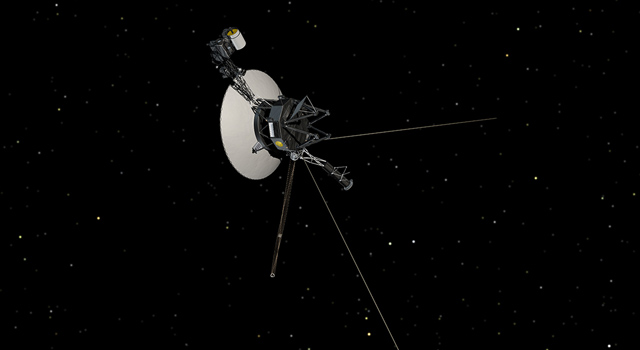News | October 26, 1989
Interruption of Voyager 2 Telemetry Signal

NASA's Voyager 1 spacecraft experienced an interruption of its telemetry signal between Monday afternoon and Tuesday midnight, and Wednesday resumed normal communications with Earth.
The spacecraft, which has been measuring the interplanetary environment in the outer solar system since its 1980 observations of the Saturn system, is north of the ecliptic plane in which the planets orbit and about 3.7 billion miles from Earth. The round-trip communication time is 11 hours.
Voyager 1 is operated by the same team at the Jet Propulsion Laboratory which recently conducted Voyager 2's encounter with Neptune, and is tracked about 12 hours per day by the NASA/JPL Deep Space Network.
After successful tracking pass early Monday, engineers found at the start of the afternoon's pass (about 4:30 p.m. PDT) that Voyager 1 was sending radio carrier wave with no data.
After analyzing the situation, they prepared and sent corrective "reset" commands, which could be followed by switching over to backup telemetry electronics. This proved unnecessary, for Wednesday morning (starting about midnight PDT Tuesday) Voyager was talking again.
Apparently "single-event upset," possibly from cosmic ray, had caused the spacecraft to switch from the main telemetry line to backup midway in the internal signal path; simple "reset" corrected this.
Voyager 1 will continue operating with Voyager 2 in the Voyager Interstellar Mission to the boundary of the Sun's influence and the interstellar medium beyond. The mission is managed by JPL for NASA's Office of Space Science and Applications.
